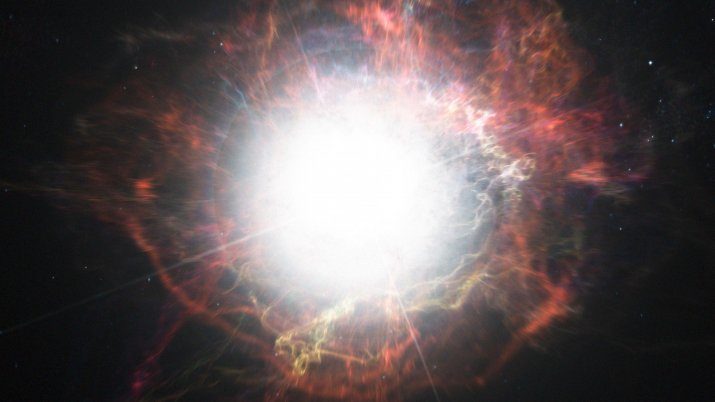
© ESO/M. Kornmesser
Humanity's ability to map the universe around us has just expanded significantly, as
astronomers have been able to detect an enormous supernova that is farther away than any we've seen before.The bright celestial event, named DES16C2nm,
exists over ten billion light years away from planet Earth, making its discovery something of an achievement for the scientists who spotted it. It's worth pointing out that the universe itself is only around thirteen billion years old, so if the light from this supernova took ten billion years to get to us, it means that the event occurred fairly early in the lifespan of the universe.
Supernovae are
among the brightest lights in the universe, caused by large, heavy stars that are bursting with so much raw volatile energy and matter that they can't help but explode in a beautiful light show. As we study stars that are further and further away from home, these big explosions are
among the easiest sights to get a good look at, thanks to the sheer amount of light and energy that they give off.
This isn't to say that successfully detecting DES16C2nm was by any means easy - in order to reach further out into the stars than ever before, a team from the University of Southampton in England had to rely on specialist sky-survey equipment in Chile, before double checking with other telescopes, including the Magellan Clay Telescope, the Keck II telescope, and the Very Large Telescope, in order to make sure that this definitely was a distant supernova event.
DES16C2nm couldn't be seen on the traditional visible spectrum of light - instead the event gave off ultraviolet light that's impossible for humans to see unaided, which was why such unique equipment was needed to confirm its existence. These events aren't uncommon throughout the universe, but they are only just becoming visible to us as the expanding universe distorts and stretches ultraviolet light so that it enters a part of the spectrum that's easier to detect.
What really makes this exciting is that the supernova's discovery will help open the door to future research.
Every new discovery of this kind makes it a little easier to survey the stars as we gradually learn about geography that's previously been outside our reach. This helps us to get a better understanding of how supernovae behave under different conditions across the universe.
According to Charlotte Angus, one of the scientists who authored the paper detailing DES16C2nm's discovery:
"The more distant supernovae we see, the more information we get on those stars."
For example, with DES16C2nm, one thing that scientists noted was that the supernova didn't seem to be giving off very much hydrogen compared to previously observed events that otherwise looked very similar. From this, it was possible to deduce that DES16C2nm must be a particularly huge, supermassive event - generally, smaller stars have more hydrogen to give off, while larger stars have less hydrogen mixed up within their components.
These kinds of insights add up, helping scientists to be able to
paint a better picture of what supernovae look like not just under normal light, but also when they can only be seen on the infrared spectrum.
Scientists are getting better at filling in the blanks with celestial events of this nature, and over time, through pushing the boundaries of our own understanding, we'll be able to learn many more of the secrets of the universe, such as what exact events occur when supernovae like DES16C2nm explode into view.
Reader Comments
to our Newsletter